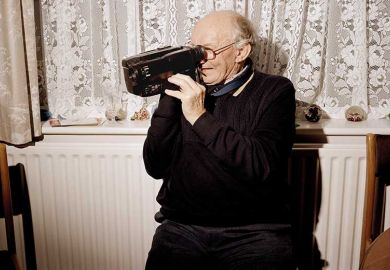Nature abhors a vacuum, but the rumour mill loves it. And an information vacuum risks turning the best thing that’s happened to Australian research in decades, the A$20 billion (£10.7 billion) Medical Research Future Fund, into an echo chamber of complaint.
The MRFF is the single largest boost to health research funding in Australia’s history. But if its aims are laudable, its disclosures are impenetrable.
So far, the government hasn’t tabled the full list of allocations required every two years, or published online grant announcements each time money is withdrawn from the MRFF’s special accounts – both requirements of the MRFF Act 2015.
Instead, health minister Greg Hunt has proclaimed MRFF spending in an accelerating media blitz evidently designed to score brownie points ahead of May’s election.
It is very difficult to tell how much of the money has been firmly allocated and how much is a vague future promise; how much has been announced before and is getting another airing as part of some bigger initiative; and how much merely signifies an intention to pour money into some worthy goal – doubtless to be announced all over again, when the government gets round to handing out the money.
A smattering of spending detail has been published in the government’s budget papers. A discussion paper on the MRRF’s 2018-2020 research priorities included a summary of the evolving balance, unallocated funds and amounts earmarked for the four main funding streams, but it did not outline individual grants.
More recently, the health department released a list of grant recipients up until 19 February. But it doesn’t explain when the grants were made or for how long, or which are merely under negotiation. And by THE’s reckoning, another A$580 million of announcements have been touted since 19 February.
Confronted by this morass of confusion and doublespeak, there’s little wonder that medical researchers are muttering. They are accustomed to the comprehensive digests published annually by the National Health and Medical Research Council, each providing exhaustive detail on a thousand or more grants.
Vlado Perkovic, president of the Association of Australian Medical Research Institutes, said the flow of information to researchers could be improved. “But researchers also need to make sure they are looking in the right places,” he pointed out. “All MRFF grant opportunities are advertised on the government website Grant Connect.”
While researchers might be used to having the information dished up, they’re also accustomed to “investigator-driven” funding where they – not the government – determine the subject matter.
The MRFF is driven by priorities determined by the Australian Medical Research Advisory Board, headed by the redoubtable Ian Frazer.
But the 2015 act only requires the government to take the board’s advice into consideration – ultimately giving Hunt a free hand to spend the money on pet projects that tug on the heartstrings, which nobody could possibly argue against without seeming heartless, even if they don’t necessarily offer good bang for buck. Like rare childhood cancers, say. Or developing a cure for motor neurone disease in partnership with an organisation spearheaded by a former footballer battling the disease. Or the $500,000 recently spent to match fundraising by grassroots “mums’n’dads” Rotary clubs to find a vaccine for malaria.
Does Hunt exercise his free hand? To a degree. The health department said that 18 per cent of MRFF funding to date had not been allocated through open and contestable processes, which is higher than the 10 per cent target outlined in the discussion paper. But researchers acknowledge the occasional need for flexibility to avoid time-consuming due process, much as the US Food and Drug Administration sometimes sidesteps its own approval processes for urgently needed medicines.
Not much of the MRFF funding is controversial and none of it is “whacky”, a source insisted. While there was no doubt that Hunt had indulged in “captain’s calls”, many of them – such as the grants to previously unfunded Advanced Health Research and Translation Centres – were “pretty good picks”.
The unrest illustrates the naturally suspicious way in which Australian researchers, conditioned to cuts and shortfalls, deal with sudden plenty.
But with the MRFF balance not yet halfway to its A$20 billion target, and another A$7.8 billion instalment due within months, the last thing that researchers want to do is make the fund look like a dog’s breakfast – perhaps giving the next government an excuse for second thoughts about where it puts its money.
John Ross is Asia-Pacific editor at Times Higher Education. He is based in Sydney.
Register to continue
Why register?
- Registration is free and only takes a moment
- Once registered, you can read 3 articles a month
- Sign up for our newsletter
Subscribe
Or subscribe for unlimited access to:
- Unlimited access to news, views, insights & reviews
- Digital editions
- Digital access to THE’s university and college rankings analysis
Already registered or a current subscriber?








